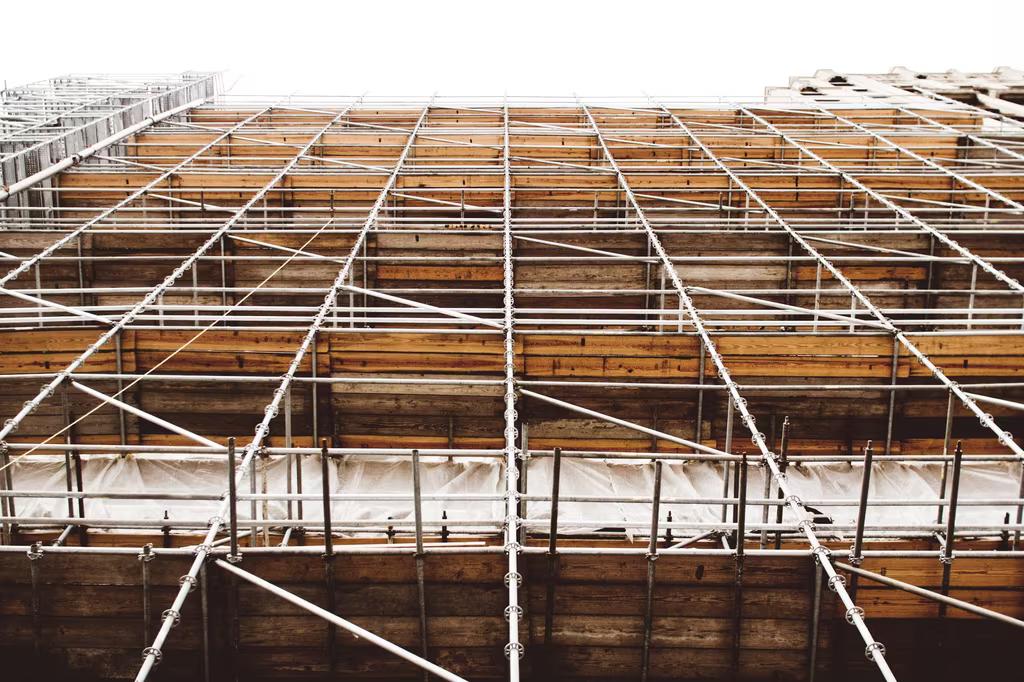
A look at Infometrics’ building forecast accuracy
For almost forty years, Infometrics has provided predictions across a range of building indicators to both government and private business clients. With activity across the broader economy under pressure, and the construction industry at a turning point, the need for reliable estimates of both the duration and magnitude of the emerging downturn is especially critical.
Average two-year non-res forecasts within 4%
Our forecasts of non-residential building activity over a two-year horizon have been consistently within 8% of published totals. The largest difference was in forecasts published June 2012 – our prediction for non-residential work put in place (WPIP) over the year to June 2013 was 7.4% below the published total (see Chart 1). Building forecasts in the early 2010s had the added challenge of incorporating the Christchurch earthquake and rebuild, which was uncertain in terms of the size and timing of the pick-up in activity.
We also note that Stats NZ building data is subject to revisions, meaning that historical series have changed slightly over time. These revisions can be seen across all charts, with forecast starting points often sitting slightly higher or lower than the 2023 published total. We have also excluded 2018 predictions for the 2020 year in this review, which were published long before even whispers of a pandemic emerged, with the lockdown’s massive, but temporary effect on activity.
Across all June quarter forecasts published between 2012 and 2017, predictions for annual WPIP in the June quarter two years ahead were on average 1.0% below the published total. Looking at the absolute difference between predictions and published totals, we are pleased to share that our June quarter two-year-out forecasts were on average within 3.8%.
Average two-year residential forecasts within 6%
Across Infometrics’ June quarter forecasts for residential WPIP between 2012 and 2017, our projections for two years ahead were, on average, 3.2% above the published total, with an average absolute difference of 5.9%.
The June 2016 forecasts are an obvious outlier (Chart 2), with the two-year-out prediction sitting 19% above the published total. In October 2016, the Reserve Bank made significant changes to loan-value-ratio (LVR) restrictions that had a much larger dampening effect on housing market activity than seen previously, when LVR restrictions were tweaked in 2013 and 2015.
The expected effect of 2016 LVR changes were incorporated into our final set of 2016 forecasts, resulting in a lower two-year-ahead forecast, that ended up being 6.9% above the published total (Chart 3). This example of increased accuracy when new information is made available highlights both the value of frequent updates, and the adaptability of these forecasts.
2023 revisions make post-COVID accuracy more challenging
Chart 4 demonstrates two important challenges to forecast accuracy during the COVID-19 period, using residential activity as an example. Firstly, building activity throughout the pandemic was, for obvious reasons, very unpredictable. Secondly, the upward revisions made to historical residential WPIP by Stats NZ mean that our previous forecasts used a lower, now outdated, starting point.
The housing market ended up being significantly stronger throughout the pandemic than we had expected in early 2020. Very low interest rates and the removal of the Reserve Bank’s LVR restrictions were very effective at enticing investment. Additionally, the population spike during late 2019 and early 2020 increased the pool of potential buyers and people generally needing housing, both from foreigners that stayed in New Zealand longer than intended due to border closures, and from working Kiwis returning at short notice.
With updated information, our June 2021 forecasts were much closer to the actual path of residential WPIP. However, the starting point for WPIP over the year to March 2021 had been revised upwards by 6% by 2023, and this revision was behind much of the difference between our one-year-out forecast and the published total.
Forecasting: an inexact science
The aim of this article is not to say that Infometrics forecasts are a perfect, crystal ball into the future. Rather, we acknowledge that forecasting is not an exact science, but can be improved with frequent updates and a dynamic approach to incorporating new information. Our building forecasts have served as a valuable resource for gauging sector trends for many years, and will continue to empower decision makers with market insights over the years to come.
If you have any questions or would like to get in touch, please contact our Chief Forecaster Gareth Kiernan at gareth.kiernan@infometrics.co.nz.













